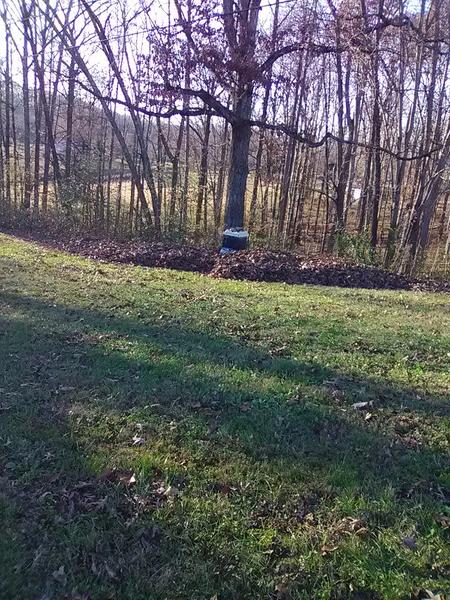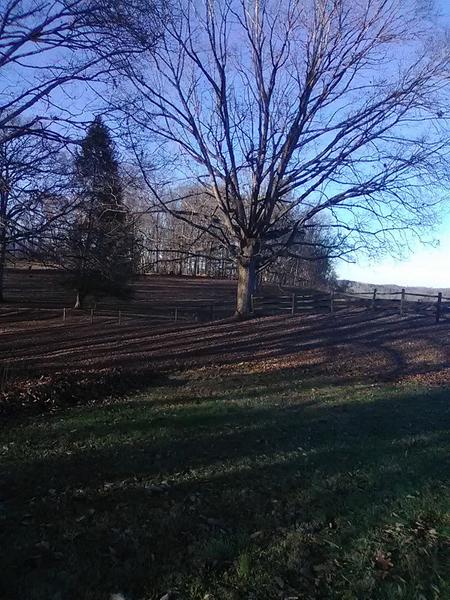
 14
14








Cultivate abundance for people, plants and wildlife - Growing with Nature



 12
12




I make a Maple Syrup instructional movie! Check it out HERE
SKIP books, get 'em while they're hot!!! Skills to Inherit Property
See me in a movie building a massive wood staircase:Low Tech Lab Movie
 1
1




Mike Jay wrote:Fall leaves area tremendous resource. One thing I do is put the contents of about 100 leaf bags in my enclosed chicken run. They scratch through it all winter and poop on it. Come March (for my climate) it starts to compost and by early summer I move it out to the garden to sit for a month before putting it on the garden.
Cultivate abundance for people, plants and wildlife - Growing with Nature



 5
5




 22
22




Idle dreamer
 2
2




Tina Hillel wrote:Most of my leaves are handled the same way as Mike's are. The chickens love them.
Part of them are used around the base of my blackberry and blueberry bushes. We have to put cages around the base of the plants to keep the leaves in place because the birds will just scratch everything back out while free ranging. Last year, we did leaves around half the plants. It made a surprising difference in their health and growth, so this year all the plants are getting the leaf treatment.
I dont know what made the difference for the plants. Maybe because it protected the roots from scratching, gave extra warmth and nutrients and gave worms a place to hide? Probably the combination. Whatever the reason, it paid off.
 Last year I ran out of leaves before I could add them to that bed. But where I did add leaves I saw great improvements.
Last year I ran out of leaves before I could add them to that bed. But where I did add leaves I saw great improvements.
Cultivate abundance for people, plants and wildlife - Growing with Nature



 4
4




 2
2








s. ayalp wrote:"use fall leaves to prepare areas for future plantings"
Definetly yes! Meanwhile you can plant garlic in fall-winter, potatoes for spring-summer. 25-30 cm (1ft) thick layer of fall leaves is ideal cover for garlic. You can also harvest long whitish-green garlic shoots, if you like them. I believe "one yard revolurion" guy (youtube) made videos about growing soil by fall leaves while having some good potato harvests.
Compost? Fall leaves are good candidates for brown material.
If you do compost stuff between raised beds (lile throwing weeds, prunes and etc out of beds into paths), fall leaves are ideal. Fill the pathways with fall leaves, no weeds, no mud and no work compost in the following years.

Cultivate abundance for people, plants and wildlife - Growing with Nature



 2
2




Idle dreamer
 3
3




Gert in the making




Richard Gorny wrote:Every year I add a few square meters to my garden by using fallen leaves. I usually start with other organic matter in early Autumn (kitchen wastes, old hay) followed by fallen leaves just before first frost.
Cultivate abundance for people, plants and wildlife - Growing with Nature



 3
3




Gert in the making
 2
2








Cultivate abundance for people, plants and wildlife - Growing with Nature



 3
3




 Plus, I could see all sorts of little critters moving around under the leaves.
Plus, I could see all sorts of little critters moving around under the leaves.
 This weekend I have some thimbleberry plants to plant in the same hedgerows.
This weekend I have some thimbleberry plants to plant in the same hedgerows.
Cultivate abundance for people, plants and wildlife - Growing with Nature



 1
1








Nicole Alderman wrote:I didn't know we had a third native maple tree here! I have vine maples and big leaf maples, but I'm pretty sure I don't have any Douglas maples. I'll have to keep my eyes out to see if I can spot these other maples!
Thimbleberries are some of my favorite plants. I have a patch that's gottten so thick that I keep digging up some and transplanting them into my predominantly-salmonberry hedges for some more diversity, tasty berries, and a longer season of berries. (I'm pretty sure the only reason salmonberries get eaten is because they're the first berry ripe, LOL!)

 in defense of salmonberries I do occasionally find a plant with yummy berries. But at last I think you are right about the vast majority. I wonder how hard it would be to develop a more tasty version...
in defense of salmonberries I do occasionally find a plant with yummy berries. But at last I think you are right about the vast majority. I wonder how hard it would be to develop a more tasty version...Cultivate abundance for people, plants and wildlife - Growing with Nature



 3
3








Dustin Liljenquist wrote:I have lots of apple trees and several very large cottonwood trees. The leaves and a bunch of the fallen apples get raked up and used for winter chicken and pig bedding. The leaves get rooted and scratched through all winter turning them into great mulch come spring. I don't know who loves the apples more, the pig or the chickens. The previous owner of this property would haul off the leaves and fallen apples and go buy winter feed and bedding to use for the animals...
Cultivate abundance for people, plants and wildlife - Growing with Nature



 4
4




Argue for your limitations and they are yours forever.




Cultivate abundance for people, plants and wildlife - Growing with Nature



 2
2




Argue for your limitations and they are yours forever.
 3
3




Gardens in my mind never need water
Castles in the air never have a wet basement
Well made buildings are fractal -- equally intelligent design at every level of detail.
Bright sparks remind others that they too can dance
What I am looking for is looking for me too!

 2
2




 5
5










Cultivate abundance for people, plants and wildlife - Growing with Nature



 3
3




 4
4




Daron Williams wrote:Looking forward to the pic Mike! The non-profit I work for has the policy of attaching pink or orange flagging tape to all of our field equipment (cameras, shovels, other tools...) - makes it all a bit easier to find in the field.
Gardens in my mind never need water
Castles in the air never have a wet basement
Well made buildings are fractal -- equally intelligent design at every level of detail.
Bright sparks remind others that they too can dance
What I am looking for is looking for me too!

 7
7









Argue for your limitations and they are yours forever.
 7
7








Cultivate abundance for people, plants and wildlife - Growing with Nature












 1
1




Works at a residential alternative high school in the Himalayas SECMOL.org . "Back home" is Cape Cod, E Coast USA.




Cultivate abundance for people, plants and wildlife - Growing with Nature







 5
5




M.L. Harney




Mary Harney wrote:"use fall leaves to prepare areas for future plantings"
Definetly yes! Meanwhile you can plant garlic in fall-winter, potatoes for spring-summer. 25-30 cm (1ft) thick layer of fall leaves is ideal cover for garlic. You can also harvest long whitish-green garlic shoots, if you like them. I believe "one yard revolurion" guy (youtube) made videos about growing soil by fall leaves while having some good potato harvests....
Cultivate abundance for people, plants and wildlife - Growing with Nature



 3
3





|
Scaramouche. Scaramouche. A tiny ad dressed as a clown.
The new kickstarter is now live!
https://www.kickstarter.com/projects/paulwheaton/garden-cards
|







